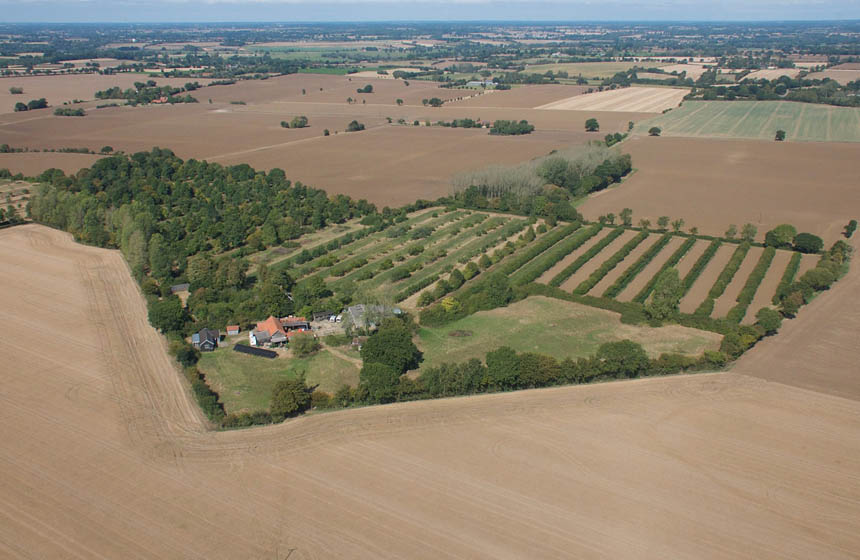Farmer-managed and community-based dryland and tree restoration
Farmer Managed Natural Regeneration (FMNR) in dryland area of Eastern Ghana restores hundreds of hectares of degraded land, countering the challenges of soil erosion and water retention.
Nature-based Intervention:
To increase soil fertility and counter land and resource degradation, communities in Talensi are engaging in Farmer Managed Natural Regeneration (FMNR), a practice that restores and generates trees from formerly cut or burned down stumps. This practice allows for faster regrowth than sapling planting and the resulting leaf litter helps improve soil quality. Farmers are using FMNR on their agricultural land and pastoral fields as well as in shared community managed forests. In addition to this main intervention, farmers have also adopted bulk composting, field mulching, and ox ploughing to aid in soil quality regeneration. Fruit tree and honey production have also been embraced as a way of diversifying income sources. The project is committed to farmer management of implemented techniques and community engagement in the collective management of the landscape through signed agreements, the establishment of community by-laws, and volunteer fire brigades to manage bushfires.
Overview of context and outcomes:
This dryland area of Eastern Ghana faces increasingly unpredictable rainfall patterns, land degradation, forest cover and biodiversity loss caused by climate change, bushfires, and over-exploitation of the landscape. These challenges contribute to reduced soil quality and poor water retention in an otherwise arable landscape.
Case effectiveness on
Climate change
Although not quantified, the new practices reportedly contribute to reducing carbon emissions from unsustainable land use.
By 2017, 64% of farmers reported an increase in soil fertility and nearly all farmers were actively managing the quality of their soil. Restored soil and trees have likely helped boost water retention in the area, reducing vulnerability to irregular rainfall patterns, a challenge expected to increase due to climate change. Community members have reported that restored land and tree cover have helped protect topsoils and decrease bushfires. As a result, communities have reported a decline in the severity and overall number of shocks to agricultural production. Households experiencing crop failure had reportedly dropped from 49.8% in 2009 to 38.4% in 2017.
Ecosystem health
Ecological effect: PositiveFMNR has reportedly led to the restoration of 718 hectares of degraded land in Talensi, containing hundreds of thousands of trees, two-thirds of which are indigenous. Monitoring has found that indigenous tree density has increased from 10 trees per hectare to 2,343. The communities reported directly planting 23,000 fruit trees which have served to supplement farmer and community income.
Socioeconomic outcomes
Indicators for hunger have decreased in the region, with Talensi households reporting more than one hungry month per year dropping from 87% in 2009 to 63% in 2017. No households reported ‘severe hunger’ in 2017 compared to 6% in 2009. Community respondents have also reported a greater diversity of income sources, participation in community savings groups, and access to credit.
Governance
The project is governed collectively by the participating households within the local community.
Finance
This project was funded by World Vision Ghana and World Vision Australia as part of their larger Farmer Managed Natural Regeneration (FMNR) Project.
Monitoring and evaluation
The project generated a baseline report, and subsequently produces annual reports on the status of the programme. This paired with monitoring data help with tracking community and environmental progress.
Trade-offs and limitations
No information yet available on tradeoffs.

Intervention type
- Food production
- Protection
Ecosystem type
- Tropical & subtropical grasslands
- Terrestrial production
Climate change impacts addressed
- Loss of other ecosystem goods
- Loss of food production
- Reduced water availability
- Soil erosion
- Reduced soil quality
Instigators
- National development organisation
Societal challenges
- Biodiversity conservation
- Climate change adaptation
- Climate change mitigation
- Disaster risk reduction
- Economic and Social development
- Food security
- Energy security
- Water security
Outcomes
- Food security: Positive
- Water security: Positive
- Health: Not reported
- Local economics: Positive
- Livelihoods/goods/basic needs: Not reported
- Energy security: Positive
- Disaster risk reduction: Positive
- Rights/empowerment/equality: Not reported
- Conflict and security: Positive
- No. developmental outcomes reported: 7
Resources
Read resource 1Read resource 2
Literature info
- Grey literature



